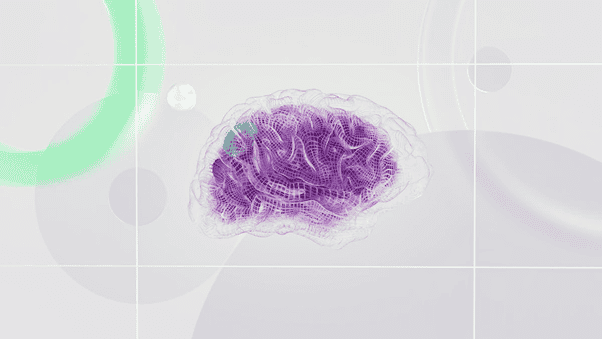Marketing Manager | Posted on | Education
Strategies for Effective Data Analysis in Student Laboratory Experiments
0
256 Views
Do you think data analysis in your lab experiments is just a side task? It's time to think again. This isn't about mindlessly running numbers or ticking off a procedural checklist. It’s about unlocking the core of scientific discovery, about piercing through the veil of superficial observations to grasp the underlying truths.
A Few Words About Guidance
Endless procrastination, waiting for the perfect conditions or more resources? That’s the hallmark of inexperience. The seasoned student researcher thrives on challenges. They’re already forging ahead, ready to unravel the mysteries hidden in the data.
Do you find yourself drowning in lab reports, struggling to make sense of your data? Let's cut to the chase. This isn't about taking the easy way out. It's about smart, strategic moves. It's about recognizing when you're in over your head and need a lifeline. That's where the lab report help by EduBirdie comes into your life. Think of it not as a crutch, but as a tool to sharpen your skills, to enhance your understanding. With EduBirdie, you're not just handing over your work; you're collaborating with experts who can guide you, show you the ropes, and help you transform your data into compelling, coherent reports.
This isn't about shirking responsibility; it's about expanding your arsenal, about being savvy enough to know when to seek guidance. Remember, in the relentless pursuit of scientific truth, the wise student knows when to ask for help and how to use it to their advantage. Let EduBirdie be your ally in the laboratory of learning.

Understanding the Basics
Data analysis in science isn't just collecting numbers like you're hoarding coins. It’s about digging into those numbers like a detective on a hot lead. You collect data not just because it’s there, but because each piece is a clue to a bigger picture.
Sure, organizing data is not the glamorous part, but think of it like sorting the pieces of a puzzle. You’re not just piling them up; you’re setting the stage for a masterpiece. And interpreting it? That’s where you turn from a data collector to a data whisperer.
Drawing conclusions means taking those dry numbers and turning them into a narrative that makes sense, that tells a story. Remember, in the world of science, data analysis isn't just a step in the process; it's the process. It's what separates the rookies from the pros.
Data Collections Techniques
Let’s break down data collection techniques in laboratory experiments.
1. Dive Into Variety
Think of your lab as an ocean of data waiting to be explored. Don't just stick to one fishing method. Cast a wide net with different data collection techniques. You've got observations, where you play detective, noting down everything you see. Then there's experimentation, where you're the puppet master, manipulating variables to see what dance they'll perform. Surveys and questionnaires? They're like sending out probes into the minds of participants. Don't forget about existing data sources, either. They're like treasure chests waiting to be opened. Mix and match these methods to get a full picture.
2. The Accuracy Arsenal: Tools and Tricks
Your data is only as good as your tools. Calibrated instruments? Check. Standardized procedures? Absolutely. Record everything with the precision. And consistency? It's your best friend. Treat every sample, every measurement like it's the most important thing in the world. Because in the world of data, it is.
3. The Sherlock Holmes Method: Observation is Key
Keep your eyes peeled and your mind sharp. Observations are about more than just watching; they're about understanding. Look for patterns, anomalies, the unexpected. And document it all. Your future self will thank you for these meticulous notes when you're deep in analysis.
4. The Mad Scientist’s Playground: Experimentation
This is where you get to play god. Change one thing, see what happens. But here's the catch: control your environment like it's a top-secret lab. One variable at a time – that's the golden rule. Keep everything else under lockdown so you know exactly what caused that reaction.
5. The Mind Probe: Surveys and Questionnaires
Sometimes, the best data comes straight from the horse's mouth. Design surveys and questionnaires like you’re a mind reader. Clear, concise, and to the point. Avoid leading questions – you're not putting words in their mouths, you're just listening to what they have to say.
6. Existing Data Sources
Don’t reinvent the wheel. Previous studies, databases, records – they're all goldmines of data. But be cautious. Check their validity, their relevance. Treat them like clues from a past detective – useful, but to be examined thoroughly.
7. The Final Check: Accuracy and Reliability
Before you call it a day, double-check your data. Cross-reference, validate, and verify. Accuracy and reliability are the cornerstones of good science. And remember, if something looks off, it probably is. Trust your instincts, but back them up with hard evidence.
Tools for Analysis
Here is what can help you when doing analysis.
Microsoft Excel
With a few clicks, it turns columns of numbers into insights, charts, and graphs that even your grandma could understand.
SPSS: The Brainiac's Go-To
This tool takes complex stats and makes them digestible. It’s like having a stats professor at your fingertips, minus the homework.
Python
Python eats data for breakfast and spits out insights. It automates the boring stuff, so you can focus on the cool discoveries.
Tableau
With Tableau, you don’t just see data; you experience it. Drag, drop, and watch your numbers come to life in full color.
MATLAB
MATLAB is like a high-tech sandbox. You go in with data, play around, and come out with engineering marvels.
Final Thoughts
So, if you’re finding excuses to sideline data analysis in your experiments, it’s time to step up. If you’re reading this, looking for guidance on your approach, you’re on the right track. Dive into your data. Understand it, challenge it, and let it guide your scientific journey. Face complexities head-on.
You are the architect of your research. Embrace originality, shoulder the responsibility. In data analysis, there are no shortcuts, only the path of rigorous inquiry and enlightened understanding. Remember, in the laboratory of science, every detail matters, every analysis counts.
Author’s BIO
Cory Shilling takes those scary mountains of data and turns them into stories. He’s not just another data geek with a laptop; he's a storyteller who happens to love numbers. With a decade playing in the big leagues of data, from Silicon Valley boardrooms to ivy-covered academic halls, he’s the guy who makes numbers dance.

